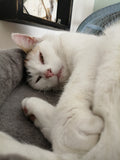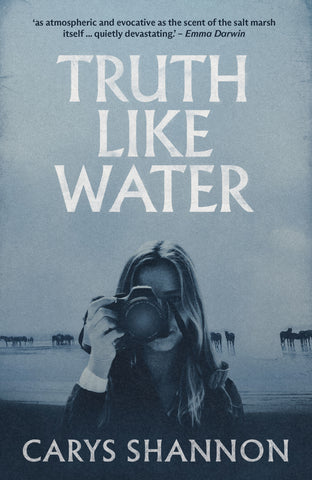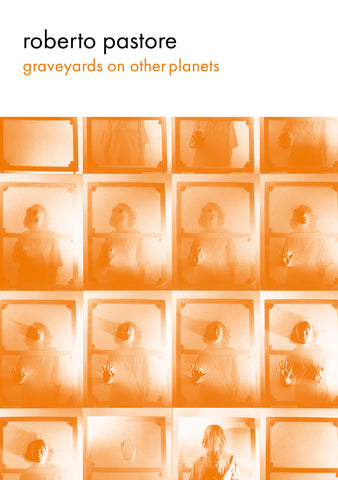Billie Ingram-Sofokleous caught up with Carly Holmes, author of the short story collection Figurehead, to ask her some questions...

What are you most proud of in Figurehead and why?
That’s a tough question! I have favourite stories (‘Three for a Girl’ and ‘Woodside Close’ would always make my top 3) but I guess I’d have to say I’m particularly proud of ‘Wich’ as it won first place in the Allingham Festival short story competition a few years ago, judged by Anne Enright, a literary hero of mine.
‘They Tell Me’ was a tough write, inspired after reading Mad, Bad and Sad by Lisa Appignanesi and discovering the atrocities that were committed against women in mental hospitals through history, all in the name of “healing” them. Teeth really were removed, and spleens, and wombs, and parts of the colon, all in search of the elusive hysteria that must be lurking inside these abused bodies. I’m proud of getting that story written without letting my words slip into anger or cliché.
Of all that you’ve written, which character are you fondest of?
It would have to be L, the character from ‘The Demon L’ and ‘Miss Luna’. She’s such an innocent, pure-hearted, sad girl, carrying a wiser, angrier version of herself inside, her demon, who tries to keep her safe from the world’s harm.
Or it would be the girl from ‘Alter’ who turns into a badger and runs away to live a wild life.
How would you envisage your perfect book launch?
It would have all my beloveds in the audience, alongside my literary heroes (who’d be enthralled, obviously, and demanding signed copies for every member of their family) and there’d be lots of laughter and wine and cats. The cats would steal the show, as cats do. My own four cats wouldn’t be there as they’re totally dysfunctional and I’d spend my entire time breaking up fights between Crow, Beast and Waif, and trying to stop Panda Bear from stealing food from people’s plates.



How did you decide the running order of stories?
I have to say, other than having ‘Miss Luna’ follow ‘The Demon L’ as it’s the second part of that story, and having ‘Three for a Girl’ in the middle as it’s novella length, I didn’t really focus too much on the running order of the stories. I tend to be pretty relaxed about things like that.
Which 3 books that you’ve read in the past year would you thoroughly recommend?
It would be impossible to name three without mentioning a novel that I’ve been editing for the last year. The Half-life of Snails is a superb debut novel by Philippa Holloway due for release in May with Parthian and I’m so excited about it. I love novels with strong, uncompromising female characters. I recently finished Signs for Lost Children by Sarah Moss (picked up for 10 pence in my local community bookshop as it was in tatters) and it was an exquisite read: elusive, delicate, beautiful. Another book that’s really stayed with me is The Dutch House by Ann Patchett, which I read a few months ago for my book group.
You dedicate your book to your brother; is he an inspiration for any of your characters?
I don’t tend to plumb my real life for characters for my stories (except subconsciously I suppose). When I was in the last year of my PhD, back in 2013, Kelvin and I received a small amount of money from our grandfather’s will. I was working as a cleaner while I finished the PhD, struggling to make ends meet. Kelvin used his money to pay the last year of my PhD fees so that I could complete it, and I promised him that I’d dedicate any future book I published to him. The Scrapbook, my debut novel, had already been signed by Parthian and was dedicated to my lost animals, so he had to wait until 2018 when Tartarus Press published the hardback edition of Figurehead. He really is the best and most infuriating of brothers!
Which book from your childhood changed your outlook on reading and writing? (Mine was Matilda by Roald Dahl)
A book I adored as a young child was Gobbolino the Witch’s Cat by Ursula Moray Williams. And I also loved fairy tales (which I still read now). From my teens I was in love with the novels of Stephen King, Dorothy L Sayers and Georgette Heyer, as well as classics like the Brontes. I’ve always been drawn towards novels with a gothic, unsettling edge.
What advice would you give writers that enjoy your work to develop their own writing?
I’m not sure I can add anything to the advice all writers give: read. Read read read. And then read more. The more we read, the more we absorb the skills needed to write our own stories. Even the books we didn’t enjoy or particularly rate have something to teach us. And, of course, write. Just don’t do what I did after I wrote The Scrapbook and stare at a blank page in frozen terror for years.
I particularly enjoyed ‘Ghost Story’ and found the image of the lengthened grin something I couldn’t get out of my head. Where did that image come from?
I really don’t remember; I’m not sure where I find inspiration or images for any of my stories, other than in my own preoccupation with a subject. As a lot of my stories are rooted in my own anxiety and the tension between my need for the security of Home and the desire to embrace the wild, a lot of the imagery I reach for reflects the natural world.
On an aside, ‘Ghost Story’ always goes down well with readers! It’s the only story I’ve ever written that scared the hell out of me when I was writing it. And it was one of the easier ones to write as the template is already there, laid down by the traditions of the classical haunted house story. I’m really glad readers like it but it demanded much less skill from me as a writer.
‘Piece by Piece’ is particularly eerie, the part of them in the house, their blood in the very paint, making a shade of red unavailable elsewhere, it feels Poe-like in its tiptoeing manner into your psyche. If you were to explore this story further, do you think you would explore the house though the newcomers Point of View?
I wrote ‘Piece by Piece’ as a way of exploring my insecure attachment to my home. When I was young I read a lot of Victoria Holt’s gothic novels and the heroine was always fascinated by a house, as drawn to that as she was to the brooding hero. I totally got that. All I’ve ever wanted was a proper home of my own, somewhere to feel safe. The narrator is physically in love with the house in this story, ultimately consumed by her love for it. For me, it doesn’t need to be explored further as it served its purpose, to write out my own obsessions and get a better handle on them.
I read Featherhood by Charlie Gilmour and it took me 3 rereads of ‘Three for a Girl’ to realise the link between magpies with the title; do you find yourself drawn towards them?
I have that book on my to-read list! I love nature writing. I gave ‘Three for a Girl’ that title because the story is about two sisters ‒ one pregnant with a daughter ‒ and it’s about the ghost girl who haunts Marie. The house is called Magpie Hall which tied in with the story title. And corvids are my favourite bird!
Happy Publication Day to Figurehead! It's available now from your favourite bookshop, or you can grab a signed copy right here on the Parthian website.




